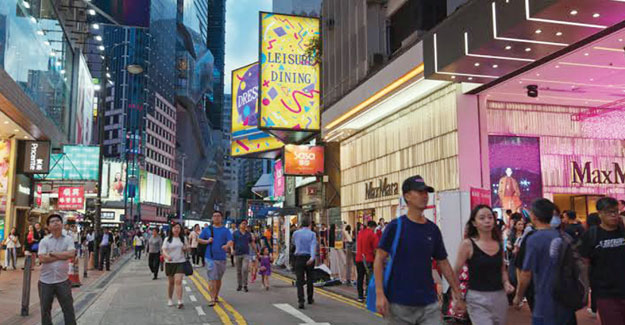
Retail Success And Failure In China: Lessons For International Brands
Why did Tesco and Amazon fail in China, while Costco is succeeding? And what about the New Retail model being pioneered by Chinese ecommerce giant Alibaba? These developments all have implications for international retailers and brands. China's retail market is heating up. Recently, police were deployed to manage massive crowds that overwhelmed Costco's first store opening in China and ecommerce giant Alibaba recently said that it will open 100 stores of its supermarket concept Freshippo (formerly called Hema), over the next year. From an outsider's lens, it would seem like the Chinese have a nearly insatiable appetite for new retailers and present a huge upside for investors. This is only somewhat true. Take for instance two among the several, high-profile failures of Western retailers in China. One of the biggest belongs to Tesco, which debuted in China in 2004, but failed to make any significant headway. Tesco wrongly believed it could entice consumers with their "secret weapon" Clubcard, because it was already extremely popular in the UK. But Chinese consumers already had an average of four store loyalty cards which they habitually toggle between for the best deals. The Clubcard wasn't enough of a differentiator to win them over. After years of losses, Tesco relinquished control of its stores to a local player. Why Amazon struggled in China US ecommerce giant Amazon shuttered its domestic ecommerce marketplace business in China this year. Although it was successful early on, with a market share of over 15%, that share has plummeted to less than 1%. Analysts said the company struggled to compete with local competitors and couldn't adapt well to Chinese consumers who demand low prices and instant delivery. So, what have Costco and Freshippo done right in Chinese retail and where did Tesco & Amazon go wrong? First, it all comes down to understanding the consumer. Unlike Tesco, Costco actively tested its products on Chinese consumers for years, before ever opening a store. Five years ago, it began selling its signature Kirkland products on Tmall Global, Alibaba's cross-border B2C platform designed to sell international products to Chinese consumers. It created familiarity between the Chinese and its brand, who came to view Costco and Kirkland's lowest price and highest quality to be a compelling differentiator. By the time Costco announced it would open physical stores in China, the Costco brand already had a very strong & loyal following. Alibaba's New Retail model Alibaba's Freshippo has drawn consumers in by completely reinventing the in-store buying experience. It is the embodiment of "New Retail"-the term Alibaba founder Jack Ma coined to describe the full integration of online and offline retail to create the ultimate shopping experience. Shoppers use their smartphones to scan products or price tags to see reviews, coupons, product origin information and pricing, among other things. They do this through the Freshippo app, which uses the same Alibaba login credentials shoppers use for other Alibaba services, such as its Tmall and Taobao marketplaces. That makes making sign-up very easy. While Freshippo is light years ahead of the average grocery retailer in the West, it is already old news in China. The first Freshippo launched in 2016. Since then, retailers like Alibaba have been taking New Retail to the next level thanks to the large amount of consumer data they collect and analyse through their vast ecosystems. This allows Alibaba and other big players like JD and Tencent to offer very personalised experiences for shoppers and to anticipate consumer needs and interests. For example, Tmall has just unveiled its 2.0 flagship online store where every feature, product recommendation and piece of content on the page is customised for the individual shopper. No two Tmall pages or shopping experiences are the same. What international retailers can learn from China So, what can international retailers learn from this? First, China is likely the weather vane for understanding what happens next in retail in the West. We are already seeing signs in the West pointing to expectations of maximum convenience as well as enjoyable experiences (e.g. Amazon Go, pop-up stores and restaurants, direct-to-consumer brands opening physical stores, etc.). In China, brick-and-mortar is functioning as much as experience destinations as for purchasing. China also affirms that consumer behaviours and preferences are fluid. Consumers can move comfortably between online and physical retail. In the US, 30-minute shipping is not the expectation, but neither was next-day delivery just 10 years ago. Technology innovation evolves consumer preference, in every market. And, it's an ever-moving target.
Textile Excellence
If you wish to Subscribe to Textile Excellence Print Edition, kindly fill in the below form and we shall get back to you with details.








